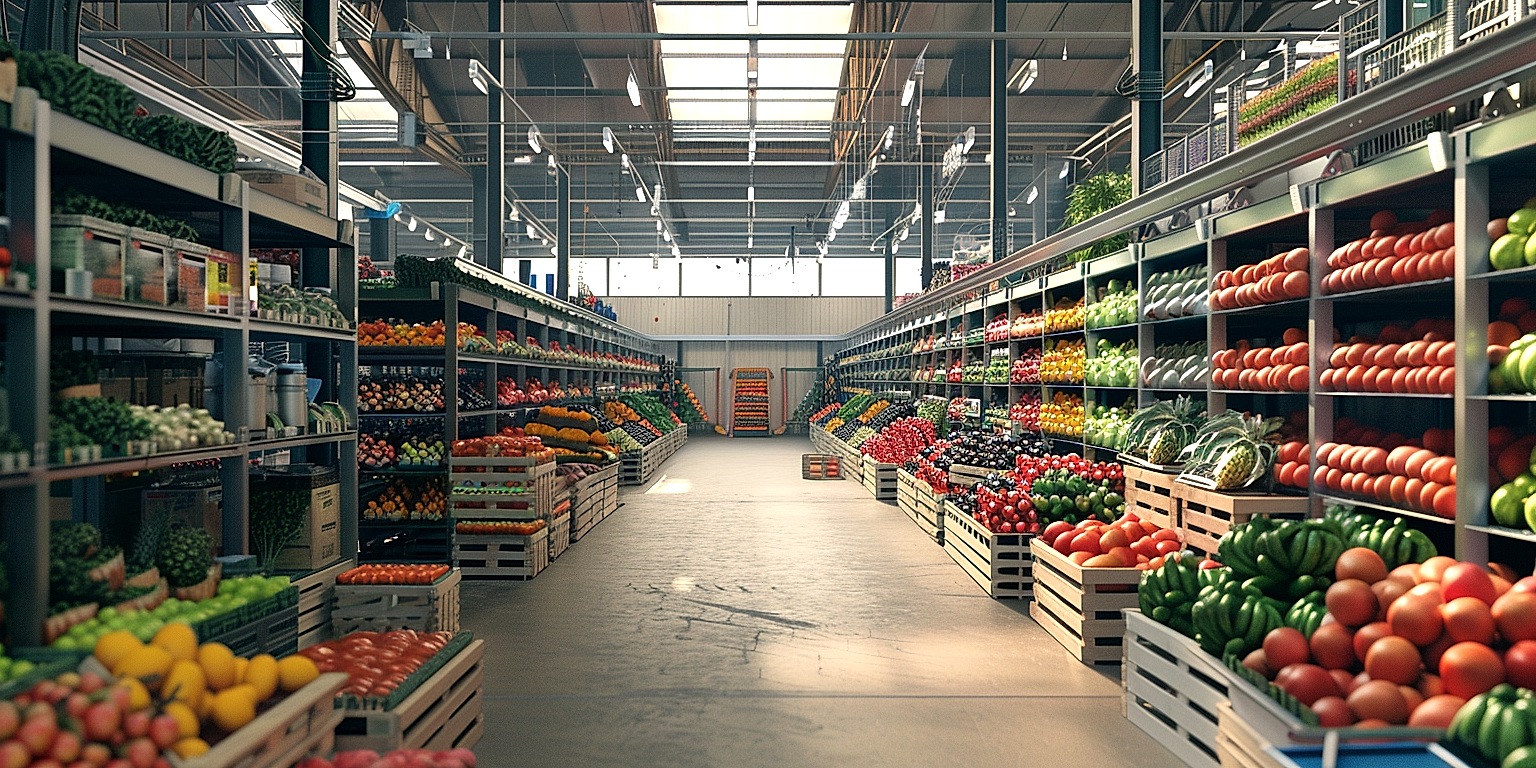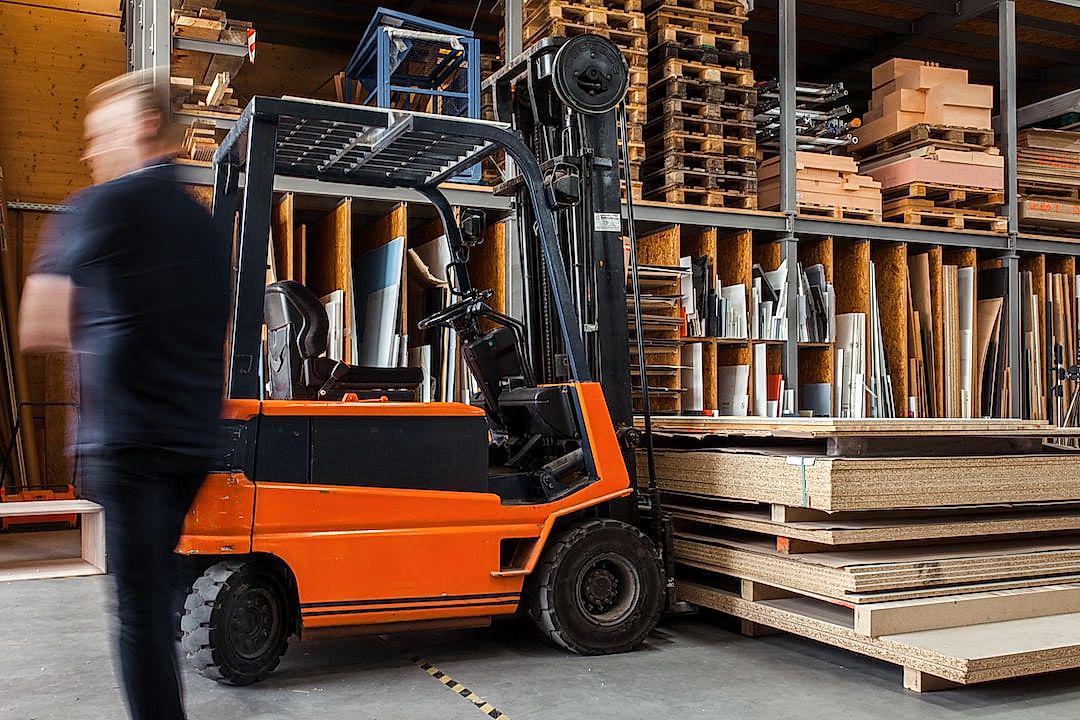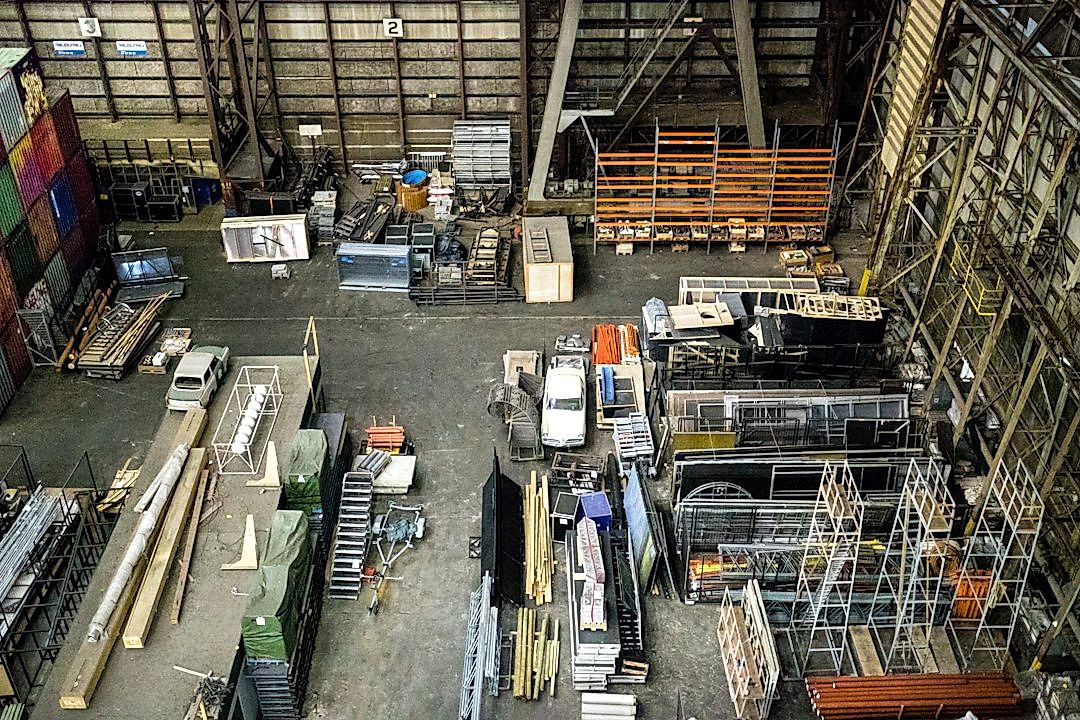The produce distribution industry faces growing pressure to reduce energy consumption in their operations.
While it’s essential to ensure that goods are stored in optimal conditions, it’s also crucial to cut energy usage to minimize environmental impact and cut costs.
However, making these changes can be challenging, specifically in identifying where energy is wasted and what changes can make a real difference.
This article is intended to clarify these issues, offering practical and effective strategies to enhance energy efficiency in warehouse settings.
Shaving fractions off your energy use not only benefits your bottom line, but also contributes to a more sustainable and responsible industry.
Read on to get acquainted with these essential tips and apply them to your warehouse for noticeable improvements.
Contents
Energy-saving Tips For Produce Distribution Warehouses
1. Install energy-efficient LED lighting systems
The installation of energy-efficient LED lighting systems has emerged as one of the most effective energy-saving solutions for produce distribution warehouses.
Switching to LED lighting systems in your warehouse can significantly reduce your energy consumption.
It is important to note that LED lights are up to 80% more efficient than traditional lighting such as fluorescent and incandescent lights.
Moreover, LED lights are also known for their longer lifespan which means fewer replacements and ultimately less waste.
The reduction of waste is an essential factor, especially considering the environmental impact of old, non-efficient lighting equipment.
On top of their longevity, LED lights convert nearly 95% of the energy they use into light and only 5% into heat.
This is a remarkable contrast to fluorescent lights which convert 95% of energy to heat and only 5% into light.
Furthermore, LED lights consume less power (watts) per unit of light generated (lumen).
This enhanced energy efficiency can significantly lower your energy bills in the long run.
The positive financial implications of this switch should not be underestimated by any warehouse aiming to reduce costs.
Another notable advantage of LED lighting systems is the fact that they provide better lighting conditions.
Moreover, they produce less heat than traditional lights which can contribute to enhanced safety and less need for expensive cooling systems.
The quality of lighting in a warehouse can also influence the accuracy and productivity of workers, therefore improving the overall performance of your operations.
Installing LED lighting systems in your produce distribution warehouse not only represents an environmental responsibility but also a significant business opportunity for cost reduction and efficiency.
In a time where businesses are held accountable for their environmental impact, transitioning to LED lights could also enhance your company’s reputation and branding.
Therefore, the decision to install energy-savings LED lights is a win-win situation for both your business and the environment.
2. Maintain and Regularly Service HVAC Systems
The HVAC system in your produce distribution warehouse plays a crucial role in controlling and maintaining optimal temperature levels that will create the right environment for your products.
Regularly servicing your HVAC system is also a great way to save energy as it ensures the system is running at its optimal efficiency, which can significantly reduce energy waste.
Poorly-maintained HVAC systems often require more energy to function, thereby increasing operational costs as well as the environmental footprint of your company.
An inefficient HVAC system can often lead to unwanted temperature fluctuations that can affect the quality of the produce, leading to product depletion and financial losses.
Hence, investing in regular HVAC maintenance is not just about achieving energy efficiency, but also about protecting and preserving the quality of your produce.
Professional HVAC technicians can identify and rectify various issues such as duct leaks, worn-out parts, and air-filter issues that might prevent your HVAC system from operating at its most energy-efficient capacity.
It is advisable to schedule an HVAC maintenance service at least twice a year, and to also carry out monthly DIY checks for any signs of wear or inefficiency.
Regular inspections of your HVAC system can also prevent costly repairs in the long run, as minor issues can be detected and fixed before they escalate into more serious ones.
A well-maintained HVAC system not only conserves energy but also promotes a healthier working environment by improving air quality.
Properly maintained HVAC systems also have a longer lifespan, which means that you will not have to frequently invest in expensive replacements.
Upgrading your HVAC system to a more energy-efficient model can also be a great way to save energy.
Today’s modern HVAC systems are designed to be much more energy-efficient than older models and they also typically come with green features such as programmable thermostats and energy-saving modes.
In summary, proper and regular maintenance of your HVAC system is key to achieving and maintaining optimal energy efficiency in your produce distribution warehouse.
Moreover, with HVAC technologies rapidly evolving, it is important to get professional advice on how to take advantage of these advancements to further improve energy efficiency in your facility.
By doing so, you will be making a significant contribution towards reducing your warehouse’s environmental impact, while saving substantial amounts of money in the process.
3. Use Automatic Doors to Prevent Energy Loss
The importance of minimizing energy loss by using automatic doors can be highly impactful in making your produce distribution warehouse more energy-efficient.
Automatic doors can be programmed to open and close swiftly, ensuring that minimal amounts of heat or cool air escape.
Considering the constant entrance and exit of produce and people in a warehouse, a slight delay in the shutting of a conventional door can lead to a considerable amount of energy loss.
Yet, automatic doors, by design, prevent this problem and can contribute to a meaningful reduction in your energy usage, and thereby, your energy costs.
This energy-saving tactic is particularly important in warehouses where temperature control is crucial to keep the produce fresh.
Produce distribution warehouses require precise temperature and humidity controls, and energy loss through open doors could disrupt these delicate environments, leading to product spoilage and waste. An automatic door system offers a solution to this challenge.
It’s important to note that there are different types of automatic doors to consider based on your specific needs.
For instance, high-speed doors can be a good fit for areas with high traffic, where doors need to open and close rapidly to prevent energy loss.
On the other hand, thermal barrier doors can offer excellent insulation and temperature control, making them a good fit for areas storing temperature-sensitive produce.
Also, it is worthwhile to note that such doors are not only energy-efficient, but they also provide enhanced safety and facilitate easy movement, hence improving workflow within the distribution facility.
Moreover, most of these doors are built to last and have a low need for maintenance, which in turn leads to additional cost and energy savings over the long term.
Investing in automatic doors for energy prevention is therefore a measure that offers multiple benefits, including energy conservation, improved workflow, and cost-effectiveness.
In essence, the initial cost of installing automatic doors can be quickly offset by the substantial energy savings they bring about, making them a no-brainer for any produce distribution warehouse that’s serious about improving its energy efficiency.
Remember, in the quest to make your warehouse more environmentally friendly, every action counts, and leveraging the function of automatic doors to prevent energy loss is a significant contribution to this goal.
4. Install low-energy refrigeration units
Refrigeration units constitute a significant portion of the energy usage in a produce distribution warehouse.
Thus, their efficiency directly impacts the overall energy consumption and, by extension, the operational costs of the warehouse.
To save energy in this aspect, one effective solution is to install low-energy refrigeration units.
These systems utilize advanced technologies to cool spaces with minimal energy usage, consequently reducing electricity bills.
Traditional warehouse refrigeration units are generally energy-intensive and contribute significantly to greenhouse gas emissions.
On the contrary, low-energy models use improved insulation, efficient compressors, and intelligent thermostats to minimize power consumption.
They also feature variable speed motors that adjust the cooling capacity based on the load.
This feature not only ensures optimum temperature conditions for the stored produce but also prevents energy waste caused by overcooling.
Further, these units are designed to extract heat efficiently, which lowers the ambient temperature in the warehouse, therefore reducing the load on the air conditioning system and subsequent energy usage.
It is also worth noting that low-energy refrigeration units typically have a longer operational life than their traditional counterparts.
This results from their well-designed components and build quality which are meant to withstand long periods of operation without failing.
Therefore, while the initial costs of acquiring these systems might be high, the operation costs are lower, and they also save the warehouse owner from frequent repair or replacement costs.
Apart from saving energy, installing low-energy refrigeration units significantly reduces the environmental impact of your warehouse operations.
They have low emissions and use refrigerants with a small global warming potential, thus playing a part in the fight against climate change.
Given all these benefits, investing in low-energy refrigeration units is a practical and long-term energy-saving strategy that produce distribution warehouses should consider.
5. Optimize forklift routes for lower fuel usage.
When operating large equipment like forklifts, careful consideration of their usage can result in significant energy savings.
Optimizing forklift routes inside a produce distribution warehouse is not just essential for increasing productivity and efficiency but also for saving energy consumption.
Reducing fuel usage directly translates to lower greenhouse gas emissions, which not only benefits the environment but also helps you cut down on energy costs.
Thus, strategic route planning for forkldbecomes an integral part of energy-saving initiatives in a produce distribution warehouse.
Forklifts, especially those running on fossil fuels, consume substantial amounts of energy.
Optimization of their routes can help reduce their operating times, which, in turn, can substantially reduce their fuel usage.
There’s more to optimizing forklift routes than meets the eye, though. It is not just about shortening distances.
You should also consider avoiding congested areas, shrinking idling time and making use of effective scheduling.
These practices can further reduce the amount of fuel consumed.
For instance, regular schedules and well-mapped routes allow forklift operators to move smoothly without any unnecessary stoppages or delays, thus saving fuel.
Real-time traffic management systems can also be helpful. These systems effectively monitor forklift routes and adjust accordingly to enhance efficiencies and minimize energy usage.
Another aspect of optimization can be the use of alternative energy forklifts. Electric or hydrogen fuel cell forklifts can be more energy-efficient and eco-friendly alternatives to traditional gas-powered forklifts.
While the switch to alternative energy might require significant investment upfront, the long-term benefits in terms of energy savings can be substantial.
Besides, these types of forklifts generate less heat and noise, and they don’t emit harmful gases. So they’re not only more energy-efficient but also healthier and safer options.
Optimizing forklift routes comes down to both smart planning and effective execution.
By incorporating these practices, you can significantly reduce the energy consumption of your forklift fleet and contribute to a more sustainable and eco-friendly warehouse environment.
The Bottom Line
The simple truth is, taking steps towards energy efficiency is both a responsible and profitable venture.
Installing energy-efficient LED lighting systems and low-energy refrigeration units not only significantly reduces energy consumption, but also brings down utility costs.
Regular maintenance and servicing of HVAC systems, as well as optimizing forklift routes can drastically reduce fuel usage and contribute to a smaller carbon footprint.
Furthermore, the use of automatic doors can prevent unnecessary energy loss, enhancing overall efficiency.
Embracing these measures doesn’t just benefit the environment, it strengthens a company’s bottom line by shaving off unnecessary expenses.
Therefore, any business looking to improve its environmental responsibility should start by implementing these tested and proven measures.




